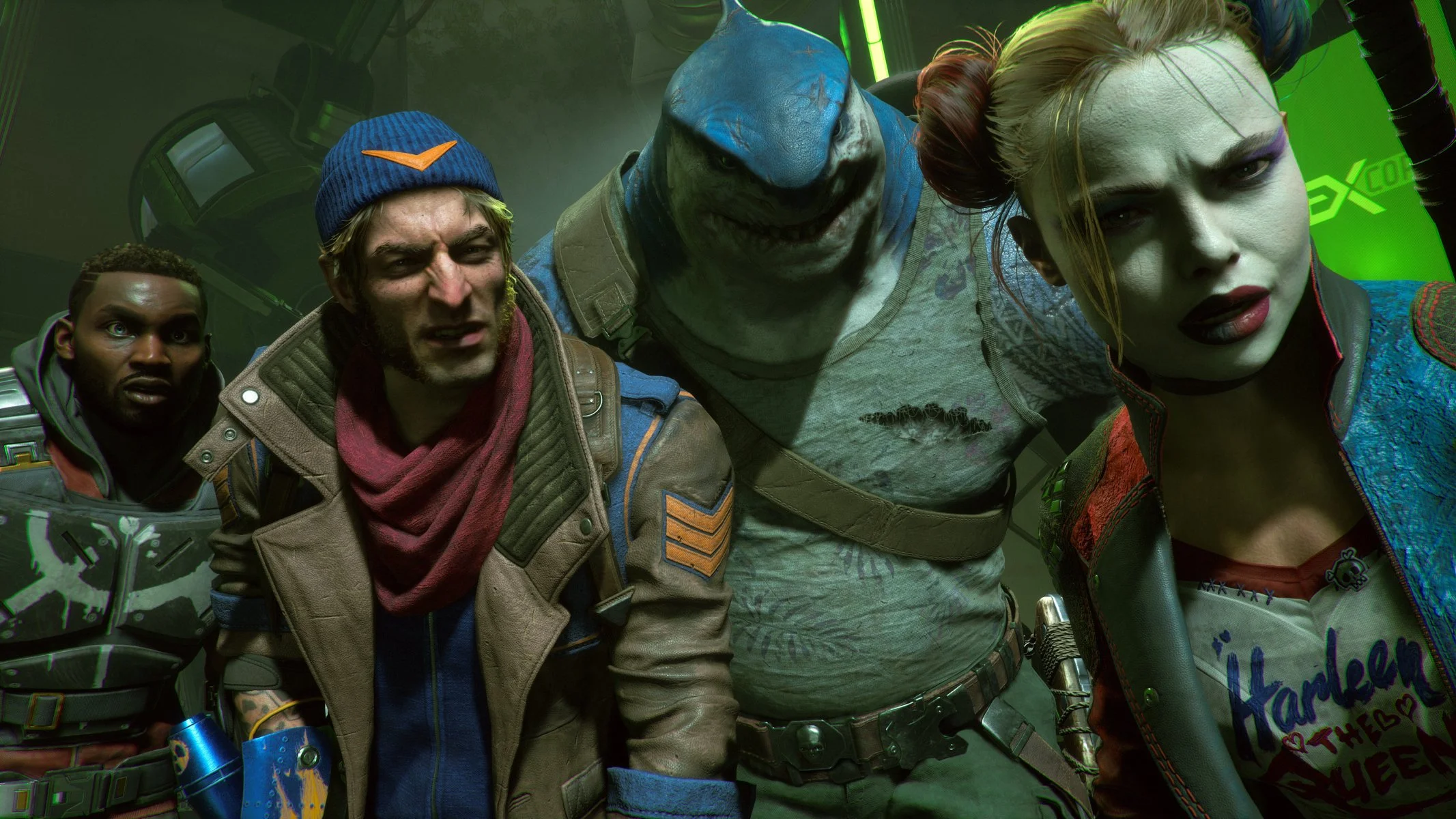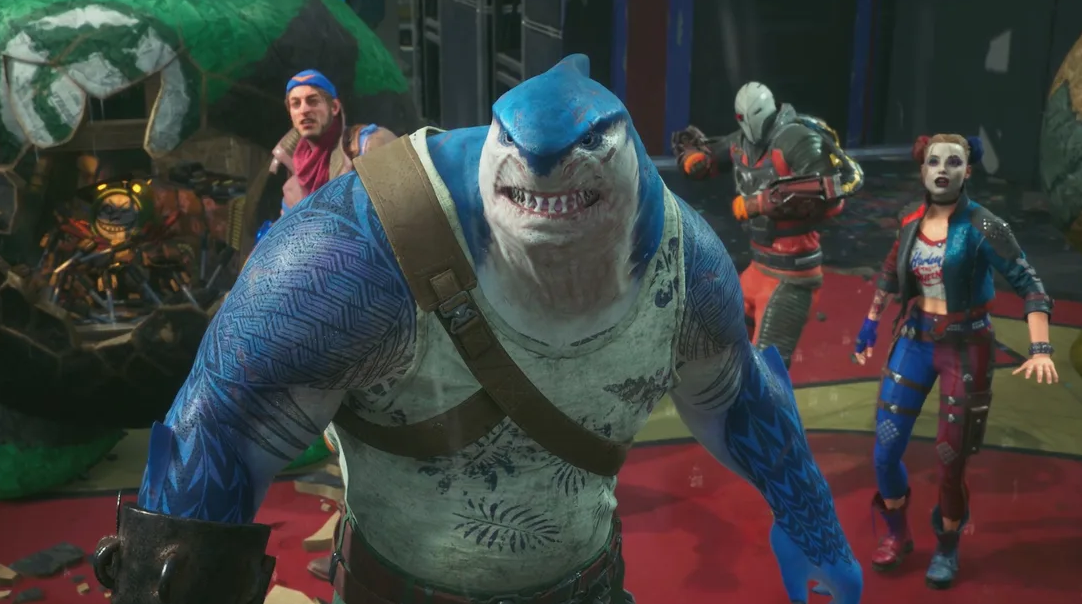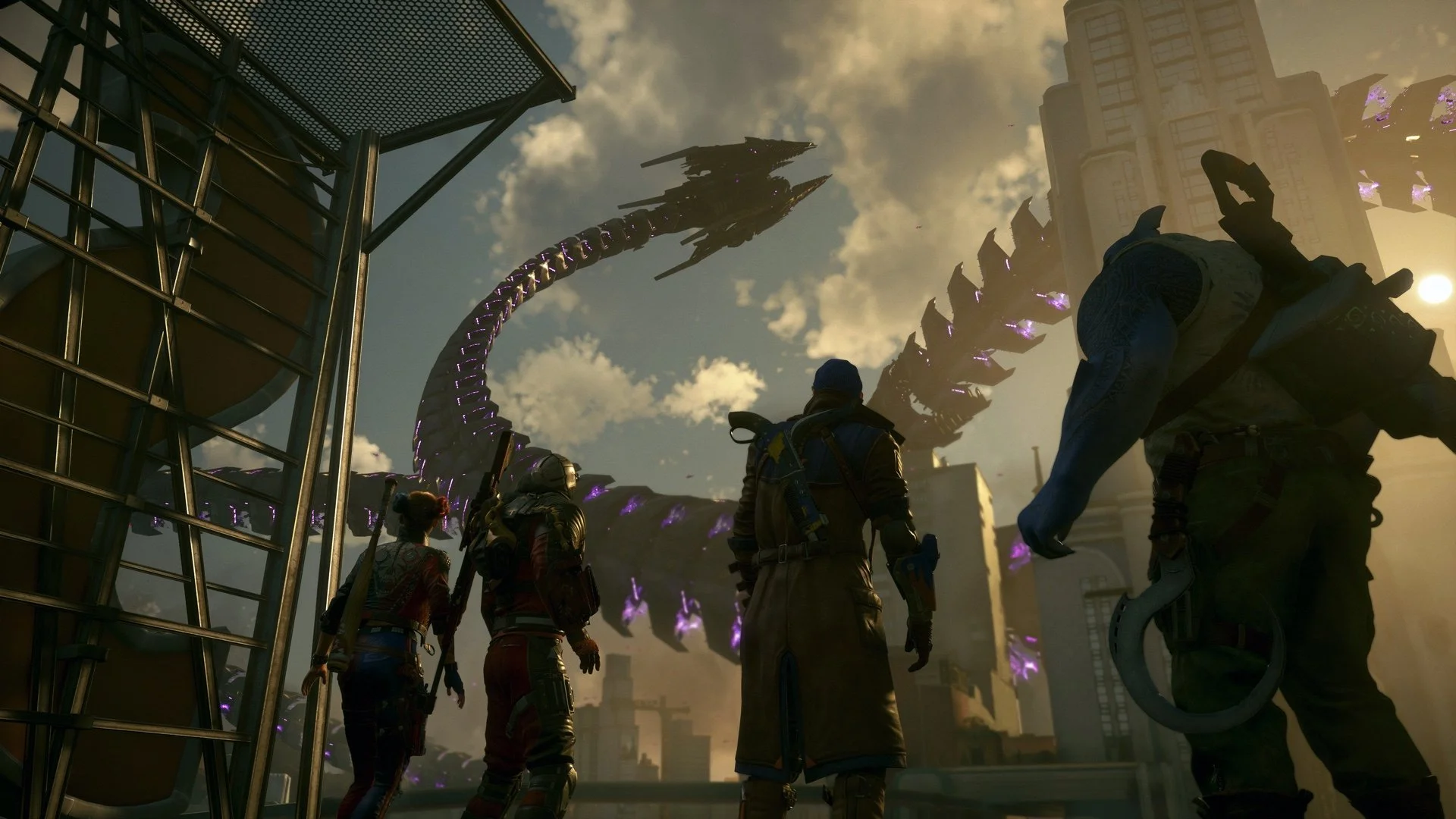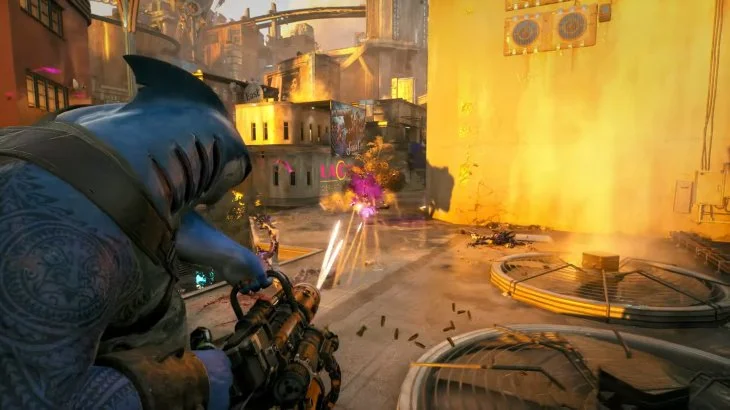From hero to zero.
Rocksteady’s Arkham Trilogy is considered one of the best collection of superhero games ever crafted; a brilliant take on the caped crusader and his iconic rogues gallery. However, when it was announced that the studio would be developing a live-service title within their Arkhamverse, many were skeptical. While I am all for wanting a team to branch out and flex their creative muscle, Suicide Squad Kill the Justice League lacks anything truly creative or unique; offering a mixed bag of elements we’ve seen a hundred times before. As it stands, this latest from Rocksteady is a significant fall from grace for the developer and a game that doesn’t know what it wants to be.
As the game has been released and much of its content shared in very public ways, I’ll be discussing everything about the game. While I won’t spoil exactly how certain characters die, I will mention their fate as the game’s title itself should give you a solid understanding of what to expect. You have been warned.
Over the past few years, The Suicide Squad has grown in popularity due to a series of live-action and animated films, plotting a similar route to mainstream appeal that we saw with the Guardians of the Galaxy. Each adaptation has seen a slightly altered roster, but the overall idea remains the same; Amanda Waller injects a bomb into the neck of each member of the team and threatens to blow off their damn head if they don’t serve her agenda. Each adaptation has varied in its quality, but the basic premise of controlling a group of comic book villains to do a bit of good is still a solid hook.
Harley Quinn, Captain Boomerang, Deadshot, and King Shark are your openers here for the roster you’ll play around with. I phrase it this way as additional seasons for the game will see an Elseworlds Joker joining the team as well as rumored additions in Mr. Freeze, Killer Croc, and Victor Zsasz, all making the rounds. Still, the group here has been featured in the recent live-action films as central characters, even if the depiction of Deadshot here lacks Will Smith’s charm and personality. Still, seeing Tara Strong have more to chew on here as Harley Quinn ain’t a bad thing, I just wish it was built around a game that was actually fun to play.
As the title suggests, the Suicide Squad is tasked with taking out the Justice League. This is due to the fact that Brainiac has taken control over most of the team, brainwashing them to do his bidding and prep the Earth for terraforming. As you begin your assault to take down Brainiac, you’ll discover that Batman, Green Lantern, and Superman have all been taken over by Brainiac, with the Flash and Wonder Woman still free from his control. It’s a shame the Justice League has such a small roster here. We don’t have the likes of Martian Manhunter, Hawkgirl, Hawkman, Aquaman, or Green Arrow, several of which have featured prominently in various WB productions. While that could change in future seasons, the target list is disappointingly short, as is the overall playtime it takes to reach credits. Honestly, the pacing of this game is blistering fast for all the wrong reasons, it doesn’t let you savor anything.
While I did enjoy portions of the narrative, I was disappointed at the similarities to Marvel’s Avengers, especially as the invasion begins on a celebration of the Justice League, mirroring the events of the opening of the Avengers’ game with Kamala Kahn taking in the celebrations during A-Day. While the remaining story is nonetheless different, its origins feel uninspired, but that’s this game in a nutshell. What follows is a pretty predictable story that is decorated with impeccable facial capture and expressive characters that serve their cutscenes well. The story itself isn’t great by any means, but it can at least be a fun watch because of the strong performances of Tara Strong as Harley Quinn, AEW’s Samoa Joe as King Shark, and Daniel Lapaine as Captain Boomerang. The strong performances do extend outside of the team with Debra Wilson as Amanda Waller and Kevin Conroy providing his voice to Batman in one of his final appearances as the character. That said, this is the worst rendition of Batman that the actor has portrayed. I mentioned before that I found Deadshot to be rather bland and that holds true through the entire experience, not once did they make me care about the character whatsoever.
Metropolis itself is a playground decorated in larger-than-life statues, giant billboards, posters and paintings of the city’s heroes, and newsfeeds hosted by Lois Lane, conveying messages of hope to survivors. However, I wonder about Lois and Clark’s relationship given her emotionless approach towards any reporting about Superman. While Metropolis is a fairly large environment to traverse, it seemingly lacks anything of note concerning setpieces or landmarks. Sure, you have Luthor’s Tower, the Hall of Justice, and the Daily Planet, but so much of the city feels like the same city blocks pasted over and over again. It lacks the personality Rocksteady gave to Gotham and feels remarkably lifeless and bland.
As you work your way through the story, you’ll encounter members of the Justice League. Green Lantern is taking his space cop persona to new heights, Batman is extremely chatty on comms, and to be honest, the Flash and Superman have very little to do here. This is a shame since fast and angry versions of those characters could have been devastating, but the story sadly waters down the threat they could pose, at least when against the Suicide Squad members themselves. Sure, we've seen an evil Superman before, but he always felt a bit too limited in said evil as he had a purpose in protecting the world by any means necessary. Here, this Superman, one controlled by Brainiac, should be ruthless, and yet here he is just boring and one-dimensional.
As the title suggests, you do target and kill each brainwashed member of the Justice League. However, not a single battle is really that great. Green Lantern is about the only fight that was even remotely enjoyable. Using your mobility to swing, fly, or leap around as you destroy his constructs makes for a decent battle, but it’s really just a loop of the same attacks and motions over and over again, especially given Green Lantern has an endless amount of creativity at his disposal. These battles all stem from the scenario of “How would Batman take out the Justice League” by utilizing some specific means to depower them. So yes, while you are literally just using your weapons to gun down each member of the team, you do this by affecting particular weaknesses to the characters to make them vulnerable such as shutting down the speedforce or subjecting Superman to Kryptonite, something every villain on earth has done a hundred thousand times before, but somehow, it finally works here.
I think my biggest issue with how these battles play out is the ways in which the battles are structured and the death of each Justice League member not getting its moment to really sink in. While I’m still convinced that they are clones produced by Brainiac, the actual deaths of a few members feel rushed and disappointing, especially given the legacy of Rocksteady’s Batman, a fight and conclusion that is just downright bad and disrespectful to the character and the actor behind the voice. It’s also a shame there are so few of these types of encounters as the game has very few bosses or critical threats to take on. Apart from these few battles, there is a giant device where you’ll harvest energy from your kills to then shut down shields on its supports, but that’s about it. I would have loved to have seen more heroes or villains controlled by Brainiac enter into the story as mini-bosses to shake up the rinse and repeat of what is on offer. Instead, it is hundreds of battles against boring and lame creatures that have your typical weaknesses and designs based on each member of the Justice League.
As it stands, you don’t get a lot of time with the Justice League members themselves. Sure, Batman is a constant force in your ear, until he isn’t, and you’ll encounter Wonder Woman and Flash a few times, but apart from a series of holograms, the Justice League are rarely part of this story, at least where it counts. However, when it comes to the Suicide Squad members themselves, the story does right by them for a solid portion of the game. Seeing them start to become a team is the best part of this story. To be fair, it’s the only good part of it. That said, any time Deadshot was involved in the story, I simply lost interest. This is simply due to his portrayal being uninspired and flat; like they needed a sniper class and forgot to write anything good for them. Harley, Boomerang, and King Shark are such scene-stealers that Floyd Lawton just didn’t have a chance, especially since his performance and design lack any personality whatsoever. He is quite simply a bland and boring character who wishes he was Deathstroke.
The bulk of what you are taking on is a constant repeat of the same few missions that often are remarkably similar. Sure, some have you flying around in a crudely constructed tank-like vehicle, but these things are so brittle that you’ll only get off a few shots before they explode. Yes, you can take on more of these missions to address that, but then you’d have to play more of these awful missions and that just isn’t fun for anyone. Otherwise, you’ll be rescuing hostages by zapping them into this ball that can shrink them and then taking them to a bus that somehow doesn’t get destroyed. Other missions have you following a vehicle or targeting enemies that then shut down a shield around a node which if destroyed, makes a larger nod vulnerable. These missions never change, evolve, and before you wrap credits you will experience each one dozens and dozens and dozens of times.
Otherwise, you are beating up the same bland bad guys, collecting pointless and generic resources, and repeating the whole song-and-dance again and again across different points across the map. It’s a rinse and repeat that doesn’t satisfy mainly because the core ideas of these missions are so bland and flimsy that they have to rely on the gameplay to even make these encounters fun. Oh, and don’t get me started on the missions where you cannot damage enemies without tracking down these little blasted runts that drop a buff that finally grants you damage capability. These were so bad that I stopped at the third one. I just couldn’t be bothered. I even had a mission fail to let me click it because one of Brainiac’s guns was situated on top of it.
To navigate Metropolis, you’ll nick a few gadgets from the Hall of Justice, such as Harley grabbing a grapple shot and bat drone, to Boomerang taking a page out the Flash’s book and tapping into the speed force. Deadshot once again goes the boring route with a jetpack and King Shark simply uses his own mobility to jump around which feels a tad lazy. Each of these traversal systems relies on a cooldown which can often zap the fun out of the gimmick. The system is designed to have you routinely land on the ground to reset that cool down with no way to upgrade or improve them, meaning they are often a one-trick pony that never ends up getting better. Imagine if Spider-Man had to reload his web-shooters on the ground every few webs in Marvel’s Spider-Man. That sounds bad, right? Well, it’s basically that here. Had the cooldowns affected the accelerated speed of your traversal and NOT its use, then that would have been a happy medium I’d be fine with.
Combat generally works by gunning down everything you see or using your melee attacks to bludgeon, slice, or stab your foe into the pavement. The gunplay does feel fine but never more than that. It feels satisfactory at best. Considering Rocksteady changed the gaming landscape with the Arkham combat system, this doesn’t feel even remotely creative. To shake up combat and make it appear to be more than shooting, some enemies will trigger a counter state indicated by an effect around their hand, which pressing a different button to shoot will affect that counter and damage them. Honestly, while I get what they were trying to do, it basically just makes it another way to just shoot them. Some enemies will have certain affliction weaknesses, which are the game’s status effects. You’ll eventually be able to outfit your melee weapon with fire, poison, electricity, and more, letting you set them on fire or freeze them, which I found to be the better option all around. While the game offers you various ways to maim your foes, everything is things we have seen across every live-service game already; there is nothing new here.
One system that is wildly important but you’ll constantly forget about is shield harvesting. Shields prevent you from taking core damage, so having yours up and ready to go is paramount. If you damage a foe a specific way, such as by shooting them in the legs, you can then melee attack them to trigger an explosion that drops shield fragments. This is how you recharge your shield to stay in the fight. Countering enemies can also drop this resource, so these are systems you’ll want to keep on top of. However, with how frantic and chaotic any part of combat is, especially with so many effects and UI elements to keep track of, you’ll rarely see those shield orbs when you really need them.
While gunplay is serviceable, the weapon variety and loadouts fare a tad better. There are some fun designs to the guns and weapons, such as themed pistols and SMGs based around characters like Black Mask or Bane. As I mained Harley through most of the game, swapping back and forth across the team to get a feel for them, I stuck to my girl and outfitted her with a pretty decent Black Mask pistol and a whopping hammer since that has been a pretty good gimmick for her through the years. You can reroll stats on weapons, and tinker with them to add afflictions to your melee options, and the customization overall is pretty solid. Sure, there are a sea of really boring and bland weaponry that is only better because the numbers go up, but that’s part and parcel with the live-service genre, so I can’t really dog on it too much for that. Still, having that sea of mediocrity does make it a bit more exciting to unlock a really cool-looking new gun or using resources to craft one, rerolling or dismantling to try again. I’ll add that the crafting system, which is handled through Penguin, is as in-depth as this sentence is talking about it.
Each character has three talent trees that unlock a new skill in order as you level up. These trees are the same exact design as Borderlands with three distinct lanes. Skill can affect each of a few classes per character, such as Harley, for example, who has classes that benefit from her running and gunning, explosives, or her capability of swinging a really big bat. These talent trees can be swapped to and activated based on what sort of build you want to main, pushing you down paths where your builds are more based on stat increases, with little to visually change them up.
This means you can go online and rarely see a drastically different Harley than the one you’ve currently been playing. There are some differences, sure, but it's not like other live service games where characters of even the same class can see fundamental differences and play entirely differently. There are seeds of something here, but the whole system feels very underbaked and only beneficial for the endgame, which has you playing through a series of boring mission types to earn a currency to then take on the slightly better missions to unlock the Bane weapons that are actually worth checking out.
Suicide Squad Kill the Justice League is a co-op game that feels stretched out to accommodate the live service model. While new characters will be added to take for a run, I'm concerned about the content that will be on offer, given its current state is a series of bland and repetitive mission types that start to blend together. Its story has its moments, as do the adaptations of certain characters, but the whole package is a huge step back for a studio that is considered one of the most industry-defining teams ever. The Arkham games meant a great deal to its fan base, but Suicide Squad clearly shows that even the best marksman can miss their shot.
Developer - Rocksteady. Publisher - WB Games. Released - February 2nd, 2024. Available On - Xbox Series X/S, PS5, Windows. Rated - (M) Blood and Gore, Strong Language, Violence. Platform Reviewed - Xbox Series X. Review Access - Suicide Squad Kill the Justice League was purchased for review, unfortunately.


















Jeff is the original founder of Analog Stick Gaming. His favorite games include The Witcher III, the Mass Effect Trilogy, Hi-Fi Rush, Hellbade: Senua’s Sacrifice, and the Legend of Heroes series, especially Trails of Cold Steel III & IV.